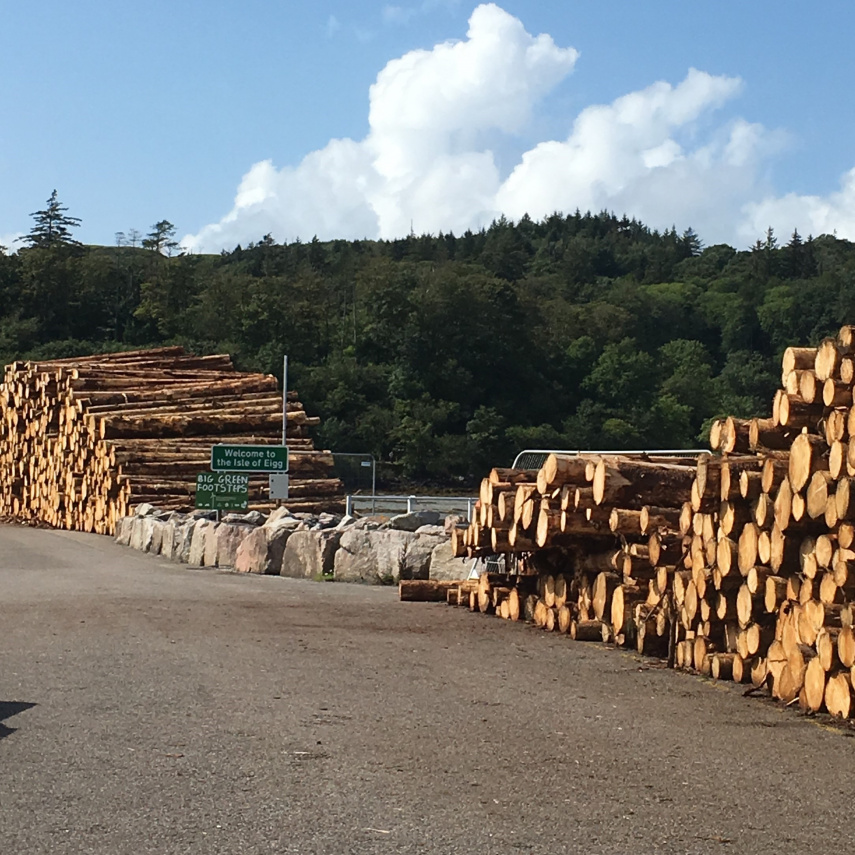
Joined-up thinking key to success in reforming funding for forestry
Karen Grant
In our latest blog, Good Practice Adviser Karen Grant looks at the ways in which we are influencing policy and practice in the forestry sector.
Diverse and sustainable forestry has an important part to play in delivering Scotland’s land use needs – but new planting to meet ambitious afforestation targets needs to be approached with care to ensure the right balance is delivered for the environment, community resilience and the public interest.
Time is running out to have your say on Future Grant Support for Forestry. The consultation closes on 17 May, so make sure your views are heard before then. Here at the Scottish Land Commission we are finalising our response, working hard to consider the challenges across sectors and to help support an approach that delivers the best outcome in today’s complex land use environment.
The Forestry Grant Scheme (FGS) is the existing mechanism for supporting woodland creation and forest management with public funding. The current consultation will gather stakeholder responses about improvements that could best achieve the aim of delivering multiple benefits from land use – to deliver for community wellbeing, biodiversity and the economy, as well as mitigating and adapting to climate change.
Our Rural Land Market Insights Report 2022 evidenced heightened land values and increasing numbers of corporations and institutions entering the land market. The profitability of forestry – supported by public funding, as well as relatively new natural capital markets – was a key driver of land prices and ownership types. Our 2023 Report is due for publication soon. We also know – through our Good Practice Programme and from research, such as that commissioned by the Forest Policy Group on Communities’ Experience of New Planting Applications in Scotland – that communities have not always felt their voice is heard in land use change for afforestation. This is particularly acute where multiple large-scale afforestation projects are happening adjacent to a community.
A refresh of the FGS brings an opportunity to better leverage public funding to support the delivery of national outcomes, including biodiversity targets and net zero, as well as embedding responsible land ownership and management practices, such as effective community engagement. The Scottish Land Rights and Responsibilities Statement (LRRS) provides a widely-agreed and helpful framework to support this.
Our response to the consultation makes a series of recommendations that propose alignment with key principles of the LRRS be encouraged in the guidance, and rewarded in the scoring system. Some measures should be mandatory to ensure a baseline of good practice. We also place importance on ensuring the Scheme is accessible and supportive to smaller scale forestry, including forest crofts, community woodlands, woodlots, or trees as part of productive agricultural enterprises. The following are key to alignment with the LRRS:
- Transparency – It should be easy to find out who owns land and how decisions are made. When a land use change is proposed, people need to know how it may impact them and how they can have a say in what’s happening.
- Community engagement – Effective, proportionate and timely communication is crucial to ensure that local voices are heard, understood and considered in land use decision-making – as well as taking account of the wider public interest.
- Diversification of ownership, use and tenure – FGS funding could support a more diverse range of ownership by becoming more accessible and viable for smaller-scale forestry, including community woodlands, woodland crofts, woodlots or agroforestry. It is important to support landowners and managers to create opportunities for local individuals, enterprises or community groups to have access to land for uses which deliver for community benefit – either through ownership, formal agreements or other models of collaboration.
- Good Stewardship – This is a broad principle which includes ensuring the right land use in the right place – taking in to account the need for the sustainable production of food or timber, delivery of wider needs such as housing, or big-picture issues such as reversing biodiversity decline and enhancing ecosystems or flood risk mitigation. The current pilot Regional Land Use Partnerships aim to propose a framework to assist with local planning on this by the end of this year.
In the last year, we have worked closely with Scottish Forestry, supporting initiatives to better align their work with the LRRS, including delivering training for their Conservancy staff who work directly with grant applicants. We are also supporting work by Confor to support their members in developing effective approaches to community engagement within the forest industry. It’s essential to listen carefully to experiences within the sector and consider practical steps which could be supported.
The consultation also seeks views on tackling the climate emergency. Grant funding for forestry can complement other sectoral support to help ensure we sustainably reduce emissions from land use activities and related industries, while delivering benefits for our society and the environment. A key area for improvement will be in areas of overlap between forestry and agriculture, so that benefits can be achieved for innovative work at the intersection between the two land uses.
Grant funding for forestry is an important tool for shaping land use to support better outcomes for communities and the environment. If we get it right, the benefits will serve this and future generations.

Take a look at our Timber Eiggxport case study to learn more about how community landowners Isle of Eigg Heritage Trust manage 247ha of forest land, working with and approved by Scottish Forestry on a Forest Plan that includes a phased programme of harvesting over 20 years to make sustainable use of the forest.